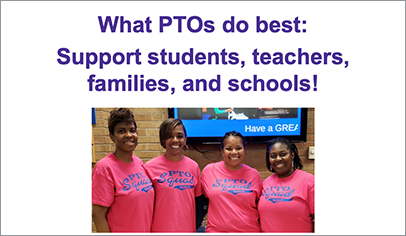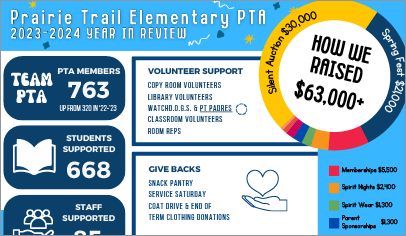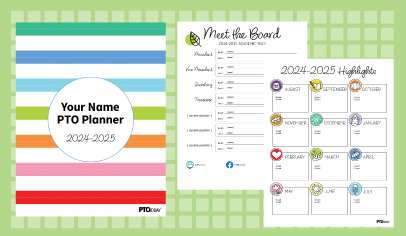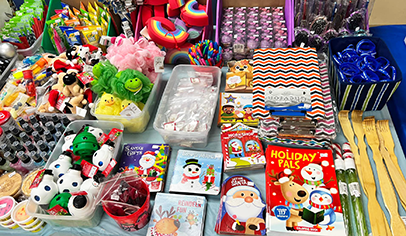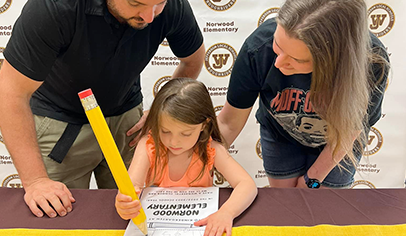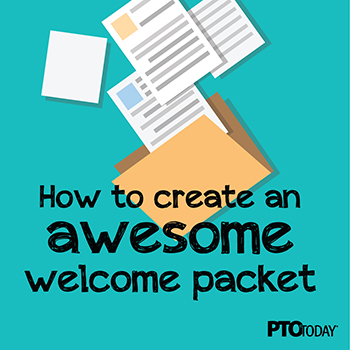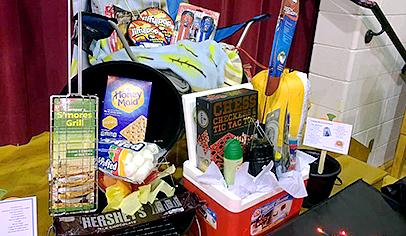Join Lani Harac from PTO Today to talk about what to work on now for a great fall 2021.
Presentation slides
Download the slides as a PDF file for your reference.
Learn more
PTO and PTA Leaders & Volunteers Facebook Group
Volunteer Recruitment Strategies
33 Easy Jobs for School Volunteers
The Parent Group Budgeting Process When Times Aren’t Normal
Ideas for Elementary School Graduation
Parent Group Planning Calendar
(updated each summer)
Family Tech Talk: Virtual Edition
Ideas for Building Spirit at Your School
Teacher Appreciation Resources
Hold a PTO Officers Summer Retreat
Post-Pandemic Planning Resources
Video Transcript
Hi, I’m Lani Harac from PTO Today. Thanks for joining me today to learn more about what steps we can take right now as parent group leaders to get our groups ready to go for spring, summer, and fall 2021. I’ll be covering some of the same information you might have heard at our recent Virtual Expos and going into more depth on some additional topics.
Looking at where we started a year ago, all we had were questions. In 2020, we were just doing what we could to get by. And, in a way, all bets were off. For many of us now, while the situation is still really challenging, we’ve come up with a lot of coping strategies, and that puts us in a better position to figure out what we need to do next.
And so, today, we’ll be covering recruitment, elections, your parent group budget, fundraising, events, and appreciation, and—if your group has been on hold—what you need to know to rev back up for fall 2021.
In case you aren’t familiar with PTO Today, here’s the one-minute summary. We were founded 20-plus years ago, specifically to make it easier for leaders to connect with one another and learn about best practices. The staff here are also leaders and volunteers ourselves, so we know firsthand what it’s like to be a parent group leader. And I wanted to point out the animation that you see at the bottom, which is the most recent digital edition of the PTO today print Magazine. If you find it online, you can flip through it onscreen and see the pages just like you would in your printed copy. You can always find the latest digital edition at PTOtoday.com/magazine.
Most of all, though, what PTO Today is here for and what all of us, as leaders, are here for—why we keep showing up—is this: helping make our schools better by supporting all of the members of the school community. And that’s what we want to help do today.
So, with that, let’s get started with our first topic: Volunteer Recruitment.
If you’ve struggled to find new volunteers, you might just be a school parent group leader. One of the biggest challenges we have, even in normal times—and it’s especially difficult now as we’re all stretched thin, feeling more anxiety, and in a lot of cases, we have less of a safety net to help out in our personal lives. These are best practices shown on the screen at any time, and I’d say they’re even more vital right now.
So talking to parents about what they want or need—socializing, specific resources, translation help, maybe it’s something else. If you can do a survey or even more than one survey to learn what’s working and what’s not, you might find some really valuable information. Maybe there are ways that you could be helping families that you haven’t even thought of yet.
To make involvement appealing, show people that you value and respect them; be real. We’re all in this together. Think about the different reasons someone might want to get involved, and also why they wouldn’t want to. Highlight the positives and let them know that you’re working to address the negatives.
Inclusion is really important, too, to make it appealing. Non-English-speaking families, for example, during this time of quarantine and shelter in place can feel especially isolated. So if you can find somebody who can translate important information for those families, and then have interpreters on hand for your meetings, whether those meetings are virtual or in person.
That menu of volunteer opportunities, you know, small and distanced gatherings, in person drive, ins and drive-throughs. If you have a closed campus, if it’s something else, many of these ideas can be adapted to work for any of those situations. So give potential volunteers a lot of opportunities to help out in small ways and not just large ones.
And finally, this last bullet point—I don’t know about you, but I have been drowning in email this past year. It’s so easy for those messages to get lost in the shuffle, or even to read an email, or a text message, and think, I’ll follow up on that again later, and then forget all about it. (If that’s happened to you, raise your hand....)
Put what people need in front of them right away, and repost links. Repost deadlines, entry forms, etc., and keep it brief so that they get the most important information that they need right away.
Two final reminders about volunteer recruitment: Recruitment happens all the time. It’s not a sign-up sheet or one conversation at the beginning of the school year that then never gets followed up on. It lasts all year long, and it can sometimes take multiple conversations. Aand finally, once a volunteer has helped, thank them for their time. Thank people individually. It is more work—but it’s probably less work than if you had to do the event or activity without their help at all. And even if it’s not less work, say thank-you anyway.
So now we’ll move on to our next topic, elections.
One of the reasons you’re thinking about volunteer recruitment is probably because you have some board positions to fill. So if you’re counting on having PTO elections this spring, give some thought to these issues:
Flexible roles. Can those roles be set up for job sharing? For example, with cosecretaries, one could handle agendas and minutes, and the other could take care of correspondence outside of your group. Or you could have cosecretaries who alternate attending meetings and taking the minutes.
You also want to check your bylaws, make sure they’re up to date, and specifically that they allow for voting online if you’re not having meetings in person.
If you’re short on names of potential board members, talk to some of your favorite teachers and find out what parents they know who are particularly active. If you have a room parent program, that’s also a good place to start because they have already shown an interest in getting involved.
And then, I can’t stress this last point enough, the personal ask is the way to go. It’s really hard to say no when someone is asking for you to contribute your specific talents to the group. I’m not saying that you will never get a no, but you’ll probably get less of them when you have that one-to-one, very personal ask.
Next up, we have budgeting.
At our Fall 2020 Virtual Expos, we talked in detail about how to draft a budget during these times when so much is up in the air. That process is detailed in one of our online articles, and I’ve included a link to that article on a slide at the end of the presentation. But if you’re not sure where to start, then this summary here, listed as Steps 1, 2, and 3, should give you a really solid idea of the resources you have to work with and what your barebones goals are for the coming year. From there, you should continually reassess, maybe even monthly, whether your projections still make sense.
And then, as our post-COVID future becomes more clear and we learn more about what the year will look like, that allows us to move more of those income and expense lines from not sure, categories into those yes-likely or no-unlikely categories.
Keep up that three-step pattern through the end of the school year to have a better handle on your income and spending and to get an idea of how to proceed for next school year.
You’ll also want to give some thought to how much money to set aside for next fall’s startup costs. So if you have a large surplus in your bank account and it’s not earmarked for any particular project, this is definitely a good time to continue spending that down. If your account balance is low, you’ll want to make sure to set aside enough that you can start the school year without fundraising right off the bat.
You might also want to give a little bit of thought to what next year’s budget will look like: if your school operation’s stay as they are right now; if school gets back to normal, whatever that looks like, but knowing that there will still be a lasting economic impact on many families; or even if it’s somewhere in the middle.
So our next topic is fundraising challenges.
We surveyed parent group leaders throughout the course of this past year. And we asked about the biggest fundraising challenges that you were facing, and the biggest challenges, in order, were how to fundraise with pandemic restrictions, which we call logistics; reaching all families at the school, communication; and getting families to participate, which is engagement. So, we’re going to dig into these one at a time now.
So, fundraising challenge number one—I’m going to oversimplify here, but bear with me: To fundraise successfully during the pandemic, or really anytime, you need to pick the right fundraiser.
So, how do you do that?
First, think about your endpoint: how much money you need, and then also how you are planning to spend it.
Then, look at your means: how do you get there. How fast do you need it? What kind of help will you have? And what makes sense for your community?
Once you have those answers, you can think about the potential fundraisers and judge whether they’re going to work for your group.
A little later, we do have a slide with a bunch of fundraising ideas divided up by the potential amount raised and the time you’ll need to do that, and so we’ll look at that in a few minutes.
Challenge number two is how to communicate with families.
So these days, even more than before, we are overwhelmed with messages from teachers, the principal, the superintendent. It’s really easy to tune out and miss something important from the PTO.
And so that’s why, you know, re-exploring the ways that you’re communicating and the different channels you might want to use. Asking for feedback from the principal and for teachers. What channels have worked for them? And really, most of all, is making sure to communicate thoroughly, but briefly. Not putting lots of extra text, just letting people know and maybe bolding it like, what’s the most important information they need so that they don’t miss it?
Challenge number three is getting families to take that last step and participate. Luckily, good research and good outreach earlier on is going to lay the groundwork for a successful fundraiser with high participation.
So. If you’re providing something that families want or that they need, something they’re buying anyway, you know, that’s going to influence them to participate more. If you’re offering them a fundraising event where they can spend time together or learn together, then that’s also going to be really helpful. And you also want to talk up the benefits. Not only are they supporting the school, but they’re also getting something that they need. You’re giving them convenience—it’s quick, and it’s easy. All of those factors are going to help increase the participation in your fundraiser.
All right. We’ve made it to the halfway point. So now, let’s dive into some fundraising ideas.
Groups have gotten really creative with events during school closures, whether their purpose was to raise money or to build community, and many of the traditional ideas that we’ve used can be tweaked to work virtually. So here, we’ve taken a lot of those ideas that are really popular and we see happening year after year, and we’ve sorted it by relative amount of time it takes to pull off the fundraiser. So less time to the left, and then as you move to the right, more time needed, and then also by the relative amount of money you can raise. And so less money toward the bottom, more money toward the top.
So this is a good place to start if you have the answers to those questions we asked before: how much time do you have, how much volunteer help do you have, what your community is going to support. Then you can look at this and see which types of fundraisers are going to be a better fit for your group at this time.
I also mentioned earlier that part of the up-front planning and research is how much volunteer support you can expect. And so on this slide, we’ve sorted those ideas into low and high number of volunteers needed, and also included a note about whether they can be easily adapted for social distance or virtual fundraising.
So you’ll be able to get a copy of these slides, and you can reference those as you’re doing your fundraiser planning.
So let’s run through some general event ideas now. For event ideas, we’ve tried to focus on ideas that are adaptable to whatever your local situation needs, whether that’s in person, distanced, or online only.
So, looking at community building events first. Keeping the community together is really vital right now while we’ve all been separated. And that’s why community-building events are such a great thing to focus on. So here are just a few ideas that you can think about. Virtual spirit weeks were a really big trend last spring, and the themes work almost the same way online as they do in person.
Art night, cooking classes, those are fairly simple to move online, as well. You’ll have a volunteer lead a Zoom or a Facebook Live step-by-step class. You can send supply or ingredient lists out to attendees along with recipes when you send the invitation. Or if you’re doing a paint paint night, one thing you could consider is that you can organize a supply drive-through pickup at school for those families who want to participate in that event.
We’re also hearing about a lot of parent groups who are using online bingo platforms that are designed for large groups, or you can DIY a bingo night with Facebook Live or Zoom or whatever your favorite video conferencing platform is to use.
If you’ve never done a One School, One Book campaign, it takes a little bit of coordinating but it’s really an amazing experience. For the younger grades, teachers could read chapters aloud each day, or students could watch prerecorded videos. Sometimes the authors make those available, each chapter being read out loud, or the teachers or a parent volunteer could create those videos with the read-aloud. Author visits can be done by grade level, either in person or via Zoom, depending on what your situation is.
Next, at PTO Today we’ve reimagined one of our most popular School Family Nights, and that has become the Family Tech Talk virtual edition because everyone’s on at least one device now. Being smart online, staying safe online has become an even bigger priority than before. And so the best part of this reimagined event is that the presentation is delivered by a Trend Micro internet safety expert. And so all your group needs to do is schedule the date.
All right, now that the weather is warming up, you might be looking to get outside. In many communities, COVID restrictions are also easier to deal with outside. So we’ve listed a few of those here. I’m just going to highlight a couple, you know, field day games and activities are always popular, and many of those activities can be adapted to do at home, or in small groups. Some examples include: pool noodle baseball, parachute popcorn, tug of war, and a car wash relay.
Another idea I really like is to do playground play dates by class or grade, which gives kids and their grown-ups a chance to reconnect, and the equipment is all right there. You don’t even need to bring anything extra. Popsicles are a really cheap and nice way also to provide a little treat to the people who come and they’re relatively inexpensive and they’re individually wrapped and so that’s a safe way to distribute a treat. They’re usually pretty allergy friendly, too.
For the end of this intense school year, it’s nice to give people an experience that they can remember as a positive cap to the year. These ideas have varying levels of complexity to setup, but most of them are pretty adaptable.
Then let’s not forget our students who are moving up and on to another school. This might be 5th grade in your school, or it might be another grade. If a whole-school event for the end of the year isn’t possible, maybe consider scaling back and just doing something fun with the graduating class, and that might be more doable.
I mentioned before how important it is to say thank-you. So I definitely wanted to share some appreciation ideas during this presentation.
If we learned one thing during the pandemic, it’s that teachers deserve all the love we can shower on them. And so, the idea is listed here range from sentimental to tasty to functional, but all of them can work for in-person or distanced or virtual celebrations. And so we’ve put some of our favorite ones here.
And some of those same ideas work just as well for volunteer appreciation. Although often we’ll have a smaller budget to work with, but you know, a sincere appreciation, sincere expression of thanks is always welcome. And even a small gift like a logo mug is a tangible reminder of the contributions that that volunteer made.
All right. We’re almost done. On to our last topic, which is restarting for next fall.
This year was anything but normal, but we all have the benefit of some experience now and we can carry that through into next year. So if your group is looking to pick things up again after being on hold this school year, this brief to do list here should get you started.
We talked about the budget review earlier, and the tips for recruiting board members. If you have no active board members right now, then keep it small and just try to put together three core roles: president, treasurer, and secretary.
If you’re a 501(c)(3) group, even if you had no financial activity this past year, you do still need to file your annual Form 990-N or 990-EZ. And also make sure your state incorporation paperwork has been renewed. Even if you’re late, just go ahead and do it anyway; you know, don’t ever get in the mindset of, Well, I’m late. I missed it. I might as well just skip it. The IRS in particular, if you catch up before they have to reach out to you, then often any penalties that might be incurred will be waived.
This summer, you also want to make sure that any incoming officers have access to all of the key documents and bank accounts. If you can swing it, maybe you can even plan a small officers retreat, where your new board, even if you’re all returning, you can meet each other or reconnect with each other and review the group’s mission statements, you can go into next year strong.
Last but not least, do some brainstorming about a welcome event for fall 2021.
Your welcome event does not need to be elaborate or expensive. At minimum, you just want to show people that your group is just as excited as they are to get back into school, and you also want to create a good first impression on those parents who are new to the school. And also do some of that community-building at the same time because community-building is going to be just so important for our groups this fall.
Keep your event free to attend. And if you have the budget for it, you know, maybe you can even get some spiritwear or some school logo gear to pass out to students.
Before we finish up today, we did have a question submitted by a leader. Jennifer O., and so I wanted to try to answer her question. She wrote, “We’ve had pretty good participation in our monthly meetings on Zoom; the same, if not better, than the last few years. How much should we prioritize returning to meetings in the school building, assuming that is possible next year, or is it OK to continue meeting virtually?”
Jennifer, this is such a thoughtful question and thank you for sending it. As long as your bylaws are up to date and they don’t specify that meetings need to happen in person, then there’s no reason not to continue meeting virtually. This could also be a good opportunity to poll your school parents and find out whether there’s a strong preference one way or the other. Or, you know, maybe you’ll decide to have most meetings on Zoom, but maybe every third meeting is in person, or maybe you have two in-person meetings a year where you do something else that’s special. As long as your parent group business gets done and the bylaws are general enough not to specify in-person only, you should have the flexibility you need to conduct the meetings as appropriate as you go through the year.
So, just remember that you’re not alone in this. The first link on here is for our closed Facebook group. It’s called “PTO and PTA Leaders and Volunteers.” And if you join the group, you can get advice and you can find and share ideas with like-minded school parent group leaders.
If all you’re looking for is information, I have also included links to lots of other content and resources on PTOtoday.com that should give you more details about all the topics that we covered in this video today.
So that’s that. That wraps it up. Thank you so much for listening, thank you for all that you do for your schools, and best of luck with what comes next.


